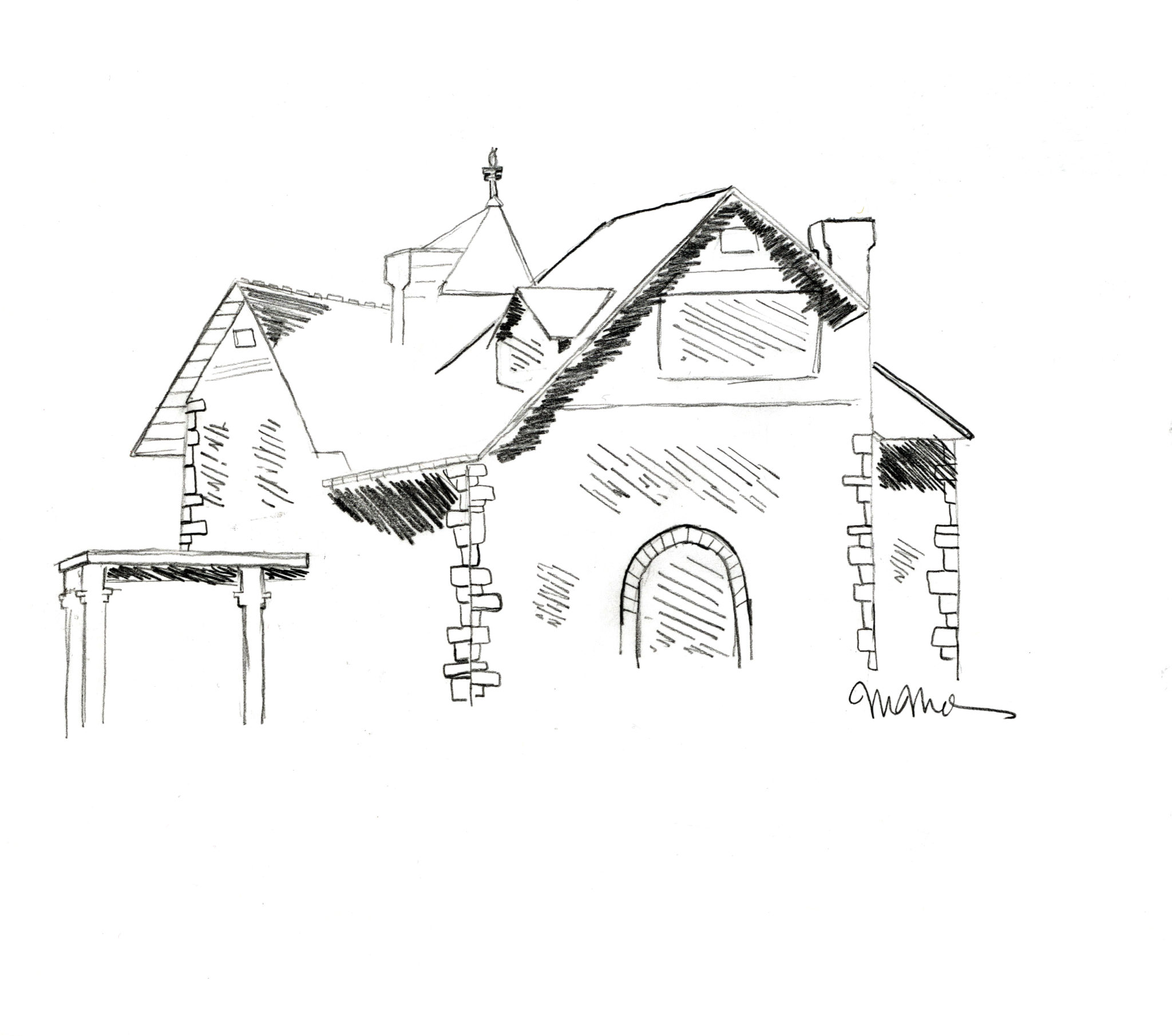
As Yale students, we frequently march through this campus unheedingly, too preoccupied with our own thoughts, conversations and activities to pay attention to the world that is passing by around us. We forget the wonder we felt at visiting campus the first time as our eyes landed on every building, desperate to capture its every facet. We grow accustomed and forget how unique our surroundings are.
Here’s the thing: The buildings that populate this campus are so much more than just the places we take classes or where we live. These buildings have stories, and, more often than not, they’re pretty interesting.
Between the last vestiges of Science Hill and the Yale Divinity School lies a small building associated with the School of Forestry & Environmental Studies called Marsh Hall. It’s an asymmetrical, four-story redstone house built in Jacobean style, featuring stained-glass windows, expansive porches and, perhaps most notably, a bracketed tower. At the time of its construction in 1878, it was one of the grandest private residences in New Haven.
The house was built for 19th-century Yale graduate and professor Othniel Charles Marsh by Josiah Cleaveland Cady, an architect who is most famous for designing the south range of the American Museum of Natural History in New York City. The house was purchased by Marsh with money inherited following the death of his uncle George Peabody, for whom the Peabody Museum was named.
Marsh is perhaps one of the most interesting, yet relatively unknown, figures to ever grace Yale University. At only 35, he obtained his professorship at Yale after studying paleontology and anatomy in Germany and Poland, following his previous graduation from the Sheffield Scientific School, a scientific school that was incorporated into Yale College in 1956. After obtaining his professorship, Marsh led the first paleontological expedition to the western frontier of the United States in 1870 and collected multiple extremely well-preserved specimens.
Perhaps the most interesting part of Marsh’s career, however, is known as the Bone Wars, one of the most famous and vicious rivalries in the history of science. Marsh’s enemy was Edward Drinker Cope of the Academy of Natural Sciences in Philadelphia. The two were initially amicable and often named species they discovered after one another. Relations between the two began going downhill when Marsh went behind Cope’s back, instructing one of Cope’s men to send fossils back to him at Yale, rather than let Cope have them. The breaking point was when Marsh pointed out that Cope had placed the head at the wrong end of the Elasmosaurus. Cope, who had already published a paper on the discovery, was publicly embarrassed, and attempted to buy back all the copies of the article — but, of course, Marsh kept his. This spurred a competition between the two to discover the most fossils and, as a result, initiated one of the fastest periods of paleontological discovery ever, resulting in the discovery of at least 136 species of dinosaurs.
In the process of this paleontological revolution, both Marsh and Cope exhausted their resources, going almost bankrupt. Upon Marsh’s death in 1899, he bequeathed all his belongings to Yale, including his house, but his estate amounted to very little. The fossils he kept in his house were donated to the new Peabody Museum and what was then called the School of Forestry took over the building, transforming it into classrooms, offices and dormitory space.
Marsh Hall isn’t the first house that Yale has turned into office space. Many of the buildings on Hillhouse Avenue were similarly purchased by Yale and never demolished, but simply turned into a workplace. However, Marsh Hall is distinguished from the rest of these buildings by its designation as a National Historic Landmark. It’s not uncommon for a building around campus to have a bronze plaque distinguishing it as a New Haven Landmark — these are awarded relatively frequently by the New Haven Preservation Trust to buildings they deem to be a part of New Haven’s architectural heritage. But Marsh Hall is one of only four buildings owned by Yale to have received the National Park Service’s distinction as a National Historic Landmark, along with Connecticut Hall, the James Dwight Dana House at 24 Hillhouse Ave. and the Yale Bowl.
Today, Marsh Hall is no longer the opulent household of Marsh, scattered with fossils and relics from his excavations. However, the building still carries the charm of a deep, interesting history. Walking in, one can almost imagine artifacts adorning the walls of his octagonal living room or picture Marsh sitting in his office, writing an angry letter to Cope. Sitting in the tower of the building and looking over the city of New Haven, one can see how the house perfectly captured Marsh’s wonder for the world and the mysteries that it contains.
Jake Kalodner | jake.kalodner@yale.edu







